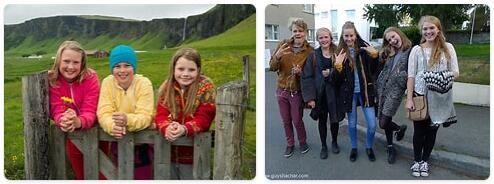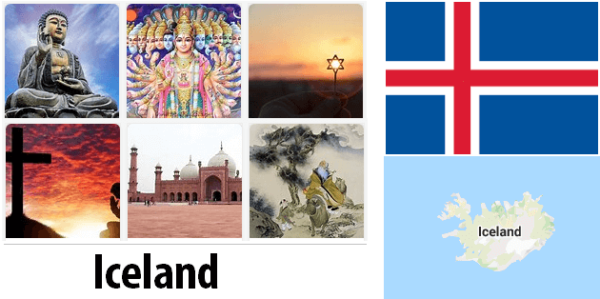Population
In 2019, Iceland’s birth and death figures were 12 and 7 per thousand respectively, which gives a natural population growth of 0.5 percent. The average life expectancy in the country (81 years for men and 84 years for women) is among the highest in the world.
Iceland is very sparsely populated (3 residents per km 2) while the population is concentrated along the coasts, especially to the southwestern part of the main island. In 2014, the capital Reykjavik had 127,220 residents. In the metropolitan area, which also includes the suburbs of Kópavogur and Hafnarfjörður, there were 225 210 persons at the same time, which corresponds to just over 60 percent of the country’s total population.
Iceland’s fourth largest city, Akureyri (18,860 residents), is located on the north coast. Urbanization has been relatively rapid, and in 2017, 94 percent of the residents lived in the country’s 58 urban areas.

Language
According to thesciencetutor, the official language is Icelandic. For historical reasons, Danish has a favored position in compulsory school, and “Scandinavian” is spoken by many Icelanders. However, English is the foreign language most people speak, and Polish is the largest minority language.
Religion
For pre-Christian religion in Iceland, see ancient Nordic religion. Already during the 8th century Irish monks settled in Iceland, but their influence was of short duration. At the end of the 9th century, Iceland was reached by a Saxon mission, and at Allting about 1000, Christianity was adopted as Iceland’s religion with the proviso that the older religion would be allowed during a transitional phase. The ancient Nordic mythology then lived on as cultural goods.
The position of the church was strengthened through the establishment of two bishopric seats, Skálholt (1056) and Hólar (1106), but it was not until the end of the 13th century that it gained as strong a position as in the other Nordic countries. The Lutheran doctrine was forcibly introduced by the Danes about 1540, and I. thus gained a state church under the strong influence of the Danish king. This aroused popular opposition, and the last Catholic bishop, Jón Arason, gained the status of a people hero. Translation of the New Testament came in 1540, the entire Bible 1584. A lasting expression of Lutheran piety during the following centuries became Hallgrímur Pétursson’s (1614-74) passion psalms (“Passion Psalms”, 1666); they are still widely read during fasting.
Around 1800, the two old bishopric seats were closed down, and the Icelandic church has since become a single diocese with a bishop’s seat in Reykjavík. A priest’s school founded in 1847 was converted to a theological faculty in 1911. The constitutional law of 1874 introduced full religious freedom, but it was stated that the Evangelical-Lutheran church would have a special status in relation to the state. During the 20th century, the Icelandic church has increasingly become the character of a folk church. The Danish model has been gradually removed from the Danish model with a strong state influence towards a model where the church’s own organs have greater influence. There is a central church board and since 1957 an annual church meeting with representatives of both priests and laymen. However, the state church ecosystem as such has rarely been questioned.
In recent decades, the state church has lost members. In 2000, 89% of Icelanders were members; In 2012, this proportion had decreased to 77%. A large part of the remainder is connected to one of the Lutheran Free Assemblies. Just over 3% belong to the Roman Catholic Church, which has a bishop in Reykjavík. The popular revival movements of the 19th century have had only a minor impact. Influences from the Danish and Norwegian internal mission movements have later found space within the national church; KFUM and KFUK, which here represent a fairly conservative Christian interpretation, have had lasting influence in parts of both the clergy and the active play people. The peculiarity of Iceland is the popular foundation of spiritualism.
As part of the general youth protest during the 1970s, an Asa society was formed in 1972, which meant to represent the pre-Christian beliefs. The group gained a position as an officially recognized religious community with, among other things, marriages; however, the connection is limited.
